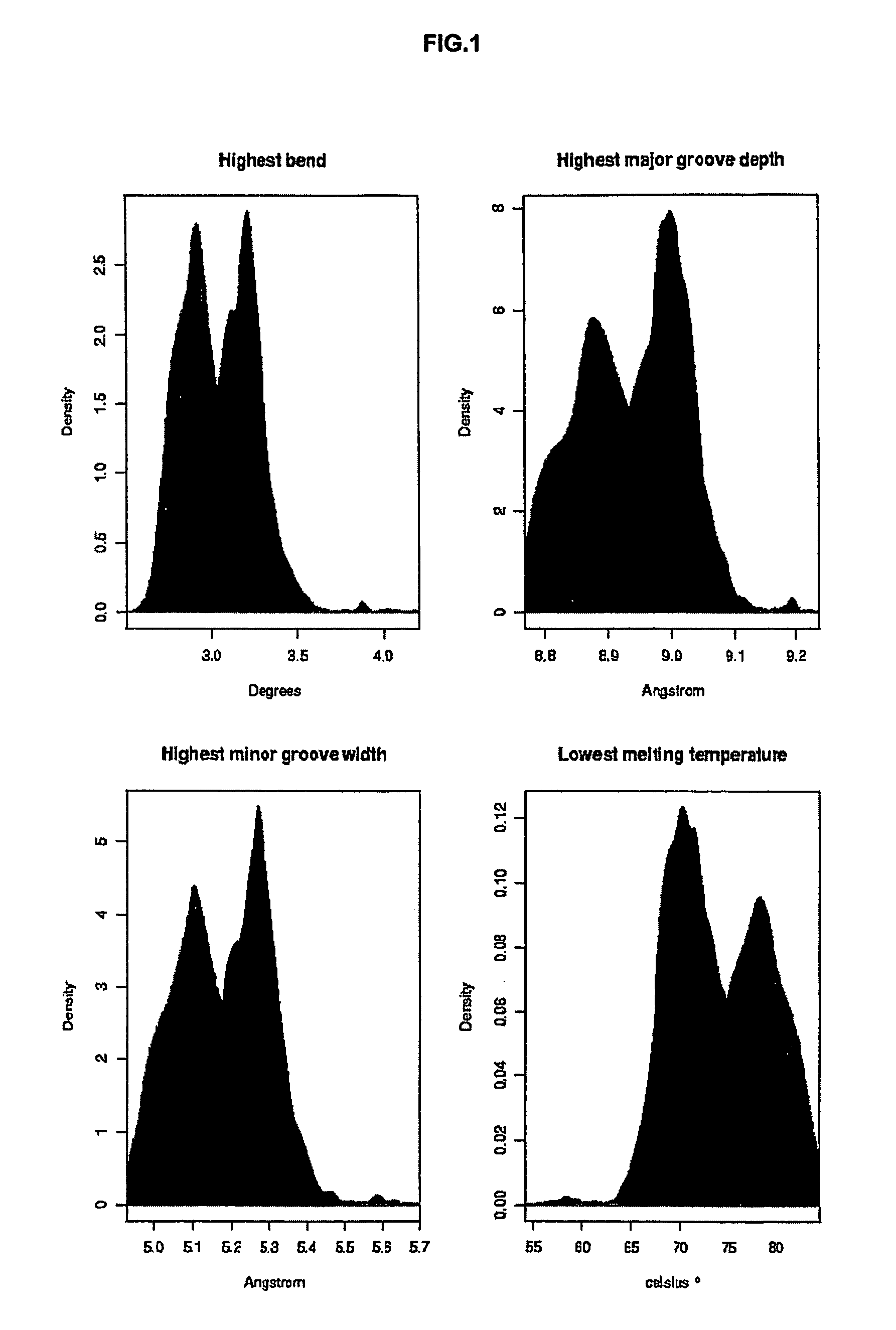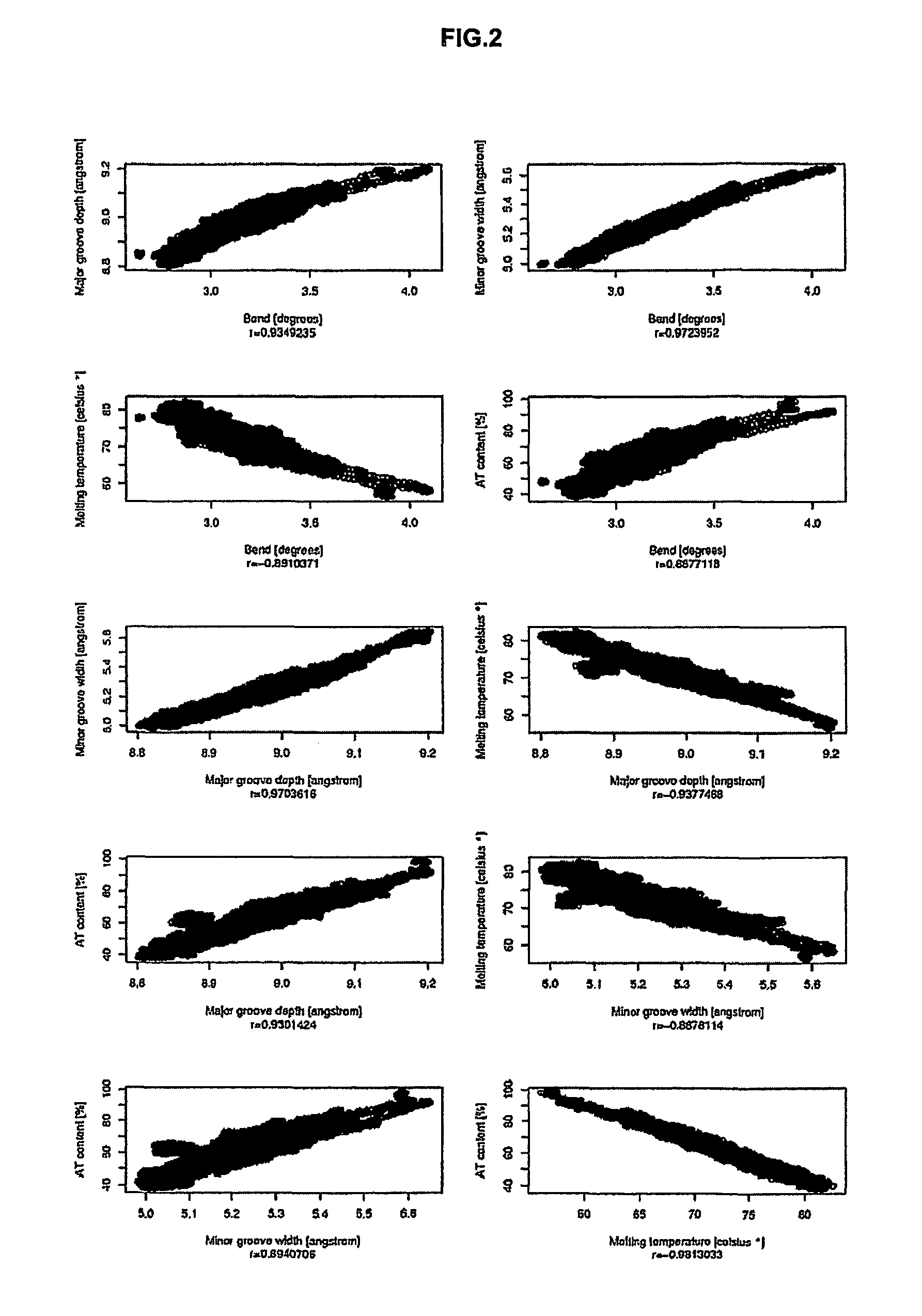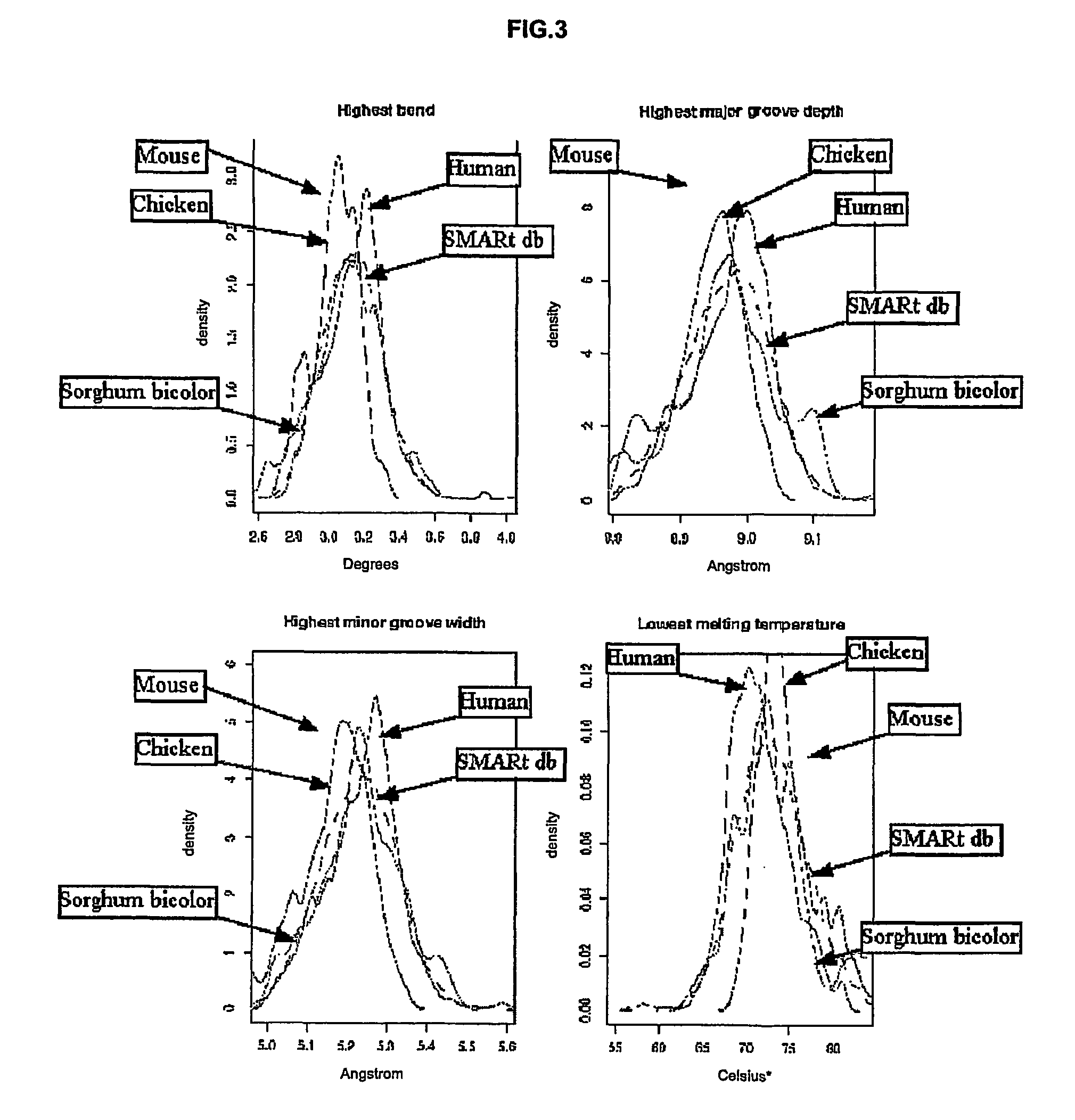High efficiency gene transfer and expression in mammalian cells by a multiple transfection procedure of MAR sequences
a multiple transfection and high efficiency technology, applied in the field of purified and isolated dna sequences having protein production increasing activity, can solve the problems of inability to generate high-producing monoclonal cell lines, cells with a higher intrinsic productivity, and inability to transfect dna per cell, so as to improve the production of recombinant proteins, improve the effect of reliability
- Summary
- Abstract
- Description
- Claims
- Application Information
AI Technical Summary
Benefits of technology
Problems solved by technology
Method used
Image
Examples
example 1
SMAR SCAN and MAR Sequences
[0204]A first rough evaluation of SMAR SCAN was done by analyzing experimentally defined human MARs and non-MAR sequences. As MAR sequences, the previous results from the analysis of human MARs from SMARt Db were used to plot a density histogram for each criterion as shown in FIG. 1. Similarly, non-MAR sequences were also analyzed and plotted. As non-MAR sequences, all Ref-Seq-contigs from the chromosome 22 were used, considering that this latter was big enough to contain a negligible part of MAR sequences regarding the part of non-MAR sequences.
[0205]The density distributions shown in FIG. 1 are all skewed with a long tail. For the highest bend, the highest major groove depth and the highest minor groove width, the distributions are right skewed. For the lowest melting temperature, the distributions are left-skewed which is natural given the inverse correspondence of this criterion regarding the three others. For the MAR sequences, biphasic distributions ...
example 2
Distribution Plots of MAR Sequences by Organism
[0208]MAR sequences from SMARt DB of other organisms were also retrieved and analyzed similarly as explained previously. The MAR sequences density distributions for the mouse, the chicken, the sorghum bicolor and the human are plotted jointly in FIG. 3.
example 3
MAR Prediction of the Whole Chromosome 22
[0209]All RefSeq contigs from the chromosome 22 were analyzed by SMAR SCAN using the default settings this time. The result is that SMAR SCAN predicted a total of 803 MARs, their average length being 446 bp, which means an average of one MAR predicted per 42 777 bp. The total length of the predicted MARs corresponds to 1% of the chromosome 22 length. The AT-content of the predicted regions ranged from 65.1% to 93.3%; the average AT-content of all these regions being 73.5%. Thus, predicted MARs were AT-rich, whereas chromosome 22 is not AT-rich (52.1% AT).
[0210]SMARTest was also used to analyze the whole chromosome 22 and obtained 1387 MAR candidates, their average length being 494 bp representing an average of one MAR predicted per 24 765 bp. The total length of the predicted MARs corresponds to 2% of the chromosome 22. Between all MARs predicted by the two softwares, 154 predicted MARs are found by both programs, which represents respectivel...
PUM
| Property | Measurement | Unit |
|---|---|---|
| groove width | aaaaa | aaaaa |
| melting temperature | aaaaa | aaaaa |
| melting temperature | aaaaa | aaaaa |
Abstract
Description
Claims
Application Information
 Login to View More
Login to View More - R&D
- Intellectual Property
- Life Sciences
- Materials
- Tech Scout
- Unparalleled Data Quality
- Higher Quality Content
- 60% Fewer Hallucinations
Browse by: Latest US Patents, China's latest patents, Technical Efficacy Thesaurus, Application Domain, Technology Topic, Popular Technical Reports.
© 2025 PatSnap. All rights reserved.Legal|Privacy policy|Modern Slavery Act Transparency Statement|Sitemap|About US| Contact US: help@patsnap.com



